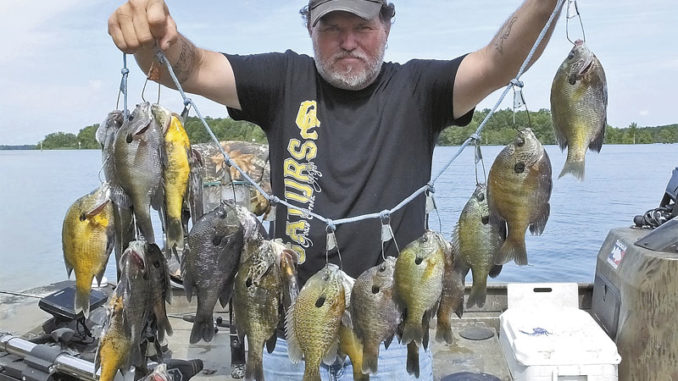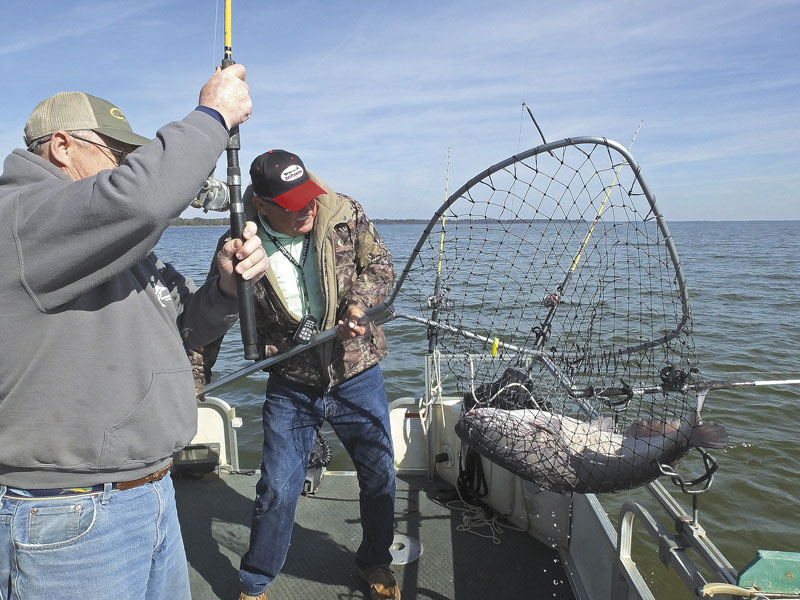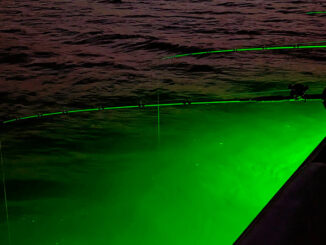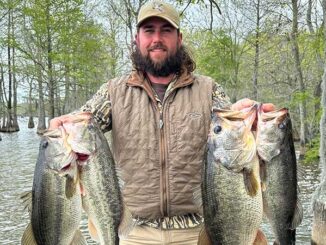
Slab-sided bluegills hanging around deep brush in November at Santee Cooper
The deer rut is in full swing in the Santee Cooper area. And while many outdoorsmen are hunting, others are enjoying the incredible fall fishing typical of November.
The rut is comparatively short-lived, so it’s difficult to miss this once-a-year-opportunity. But the rewards of fishing include excellent action on slab crappies and trophy catfish.
But if you’re into incredibly fast-fish-catching action, you may want to sample the sensational deep-water bream fishing, with action that perhaps trumps bed fishing during warm weather.
Deep-water bulls
Stacey Weatherford of Moncks Corner, S.C., fishes for bream year-round. He’s a master of catching them on the beds. But he said the deep-water fishing in the fall and winter is actually even more productive.
“It’s the fastest fish-catching experience that I’ve found,” he said. “And it typically results in limits of huge bream when you understand the technique. Deep-water brush piles are the key, but some of the best winter bream fishing on the lakes is around the many public fish attractors. I also fish brush piles I’ve placed for bream fishing.”
Weatherford, 48, said bream can still be caught in multiple depths at this time of the year. But water in 15- to 40-foot depths is his preference. His favorite spot is in 36 feet of water and consists of brush and debris that rises 5 feet off the bottom at a public fish attractor site.
“I prefer deeper water, because I’ll typically catch bigger bream,” he said. “The key is simply getting the bait down to the big bream. They’re deeper in the water column, usually around the actual brush and a few feet above it. The smaller bream will hold shallower in the water column, beginning at around 5-feet deep in 30-plus feet of water. A lot of these are decent-sized bream, but not the huge bream I target.
Get past dinks
“If you drop a cricket or worm down on a typical bream rig, these smaller fish will maul it before it gets halfway to the bottom,” he said.
To target the biggest bream, Weatherford uses a Zebco 33 spincast reel spooled with 10-pound line and a ½-ounce sinker on the bottom in drop-shot fashion. He attaches an 8-inch leader about a foot from the sinker and ties on a No. 4, light-wire hook. The heavy weight enables him to zip the bait past the smaller fish and get it down to the big bream.
“Sometimes, so many bream are suspended high in the water column I have to thread a red worm on the hook, because they’ll snatch crickets off the hook as it free-falls through the mass of fish,” he said. “Once it’s near the brush, it usually only takes a second or two for fish to load on, whether I’m using worms or crickets.
“Big bream can be found higher in the water column, but the smaller fish are too numerous and quick on the bite to catch them consistently. These are the same huge bream we target on the beds. It’s truly sensational fishing and ideal for taking a youngster fishing.”
Weatherford said a graph is essential to pinpoint the clouds of fish above the brush. Even on the public fish attractors, he uses his electronics to pinpoint fish before dropping a bait down.
“And this action stays hot right on through the winter,” he said.

Big cats, slabs on the prowl
Trophy catfish are taken throughout the year, and November is a focal point for anglers targeting big fish.
Kevin Davis at Black’s Camp said November is a prime time for trophy catfish, and multiple factors combine to create this opportunity.
“The lakes are full of this year’s forage fish, and the cooling water compressing the forage into big pods are factors,” he said. “The forage moves a lot in November, and catfish follow. Find the forage, and drift-fishing for catfish, especially huge blues, can be sensational.
Davis said crappie fishing is consistent throughout November on deep brush using small jigs or minnows on a tight-line.
“I target brush in 20 to 40 feet of water, and I move a lot until I find slab crappie,” he said. “Typically, November is prime time to catch slabs, and the size rivals what we catch during the spring.”
The outdoors action at Santee Cooper is not all about fishing in November, so take advantage of the rut for deer hunting, but save a few days to enjoy the fabulous fall fishing.





Be the first to comment